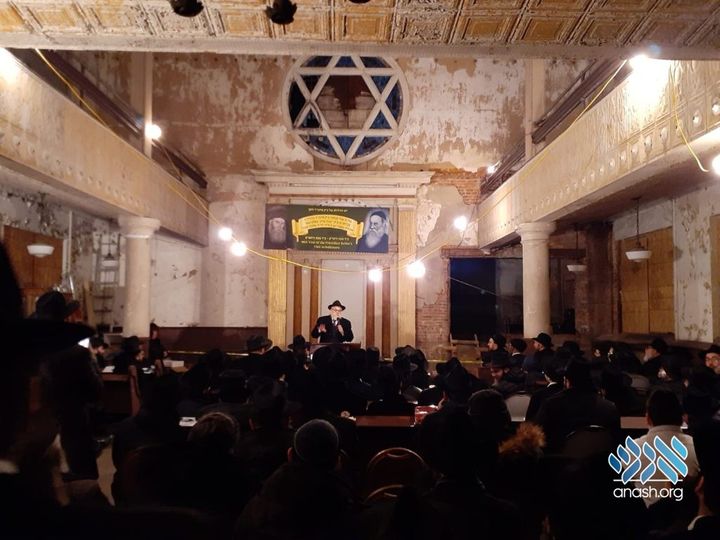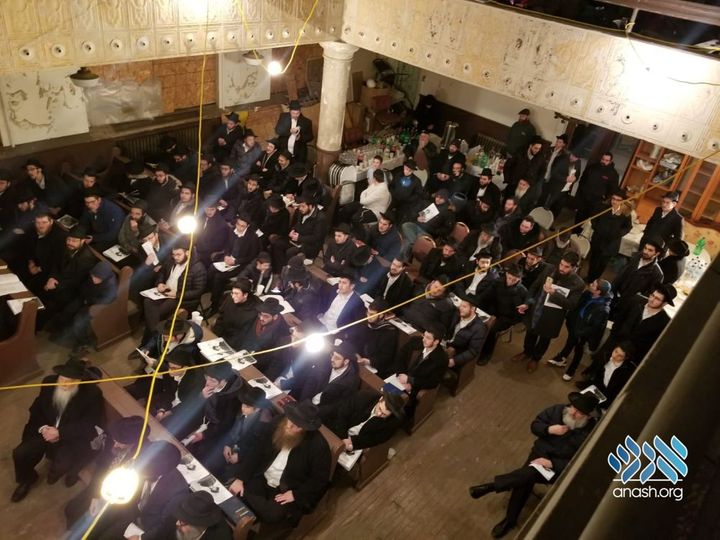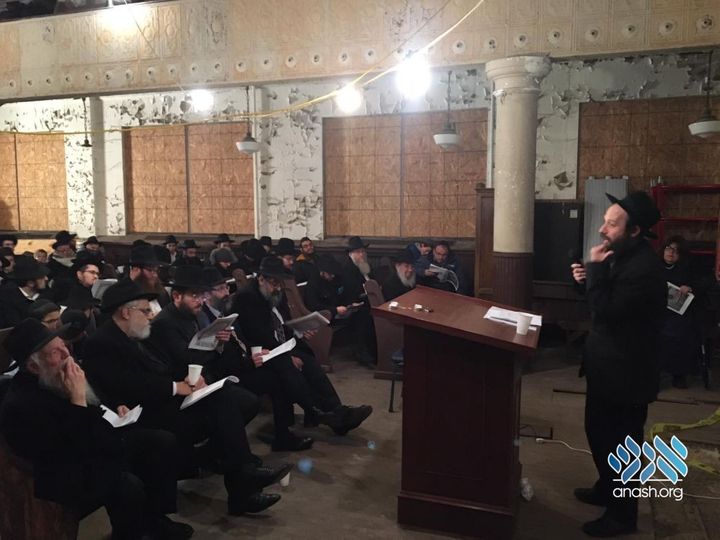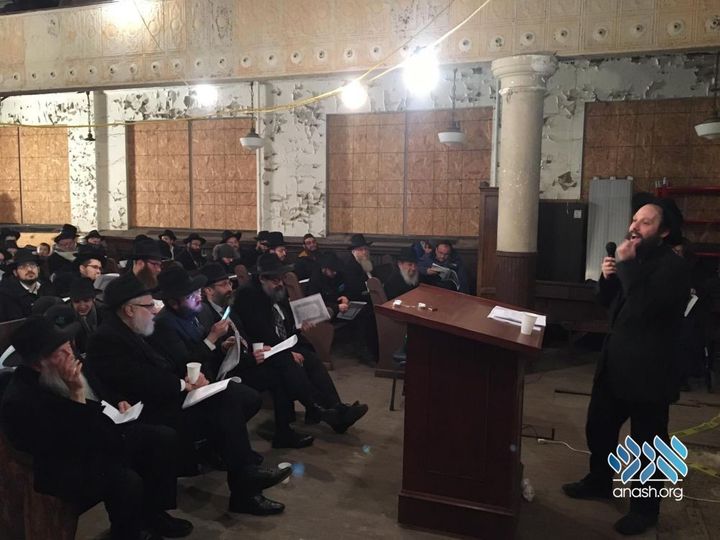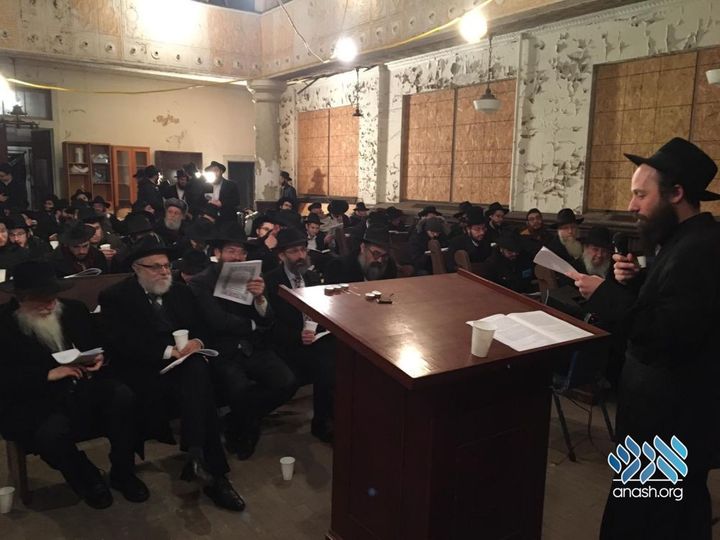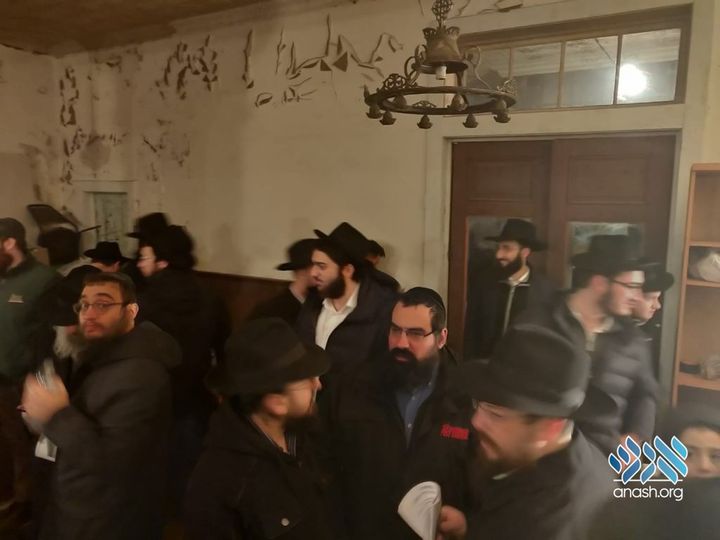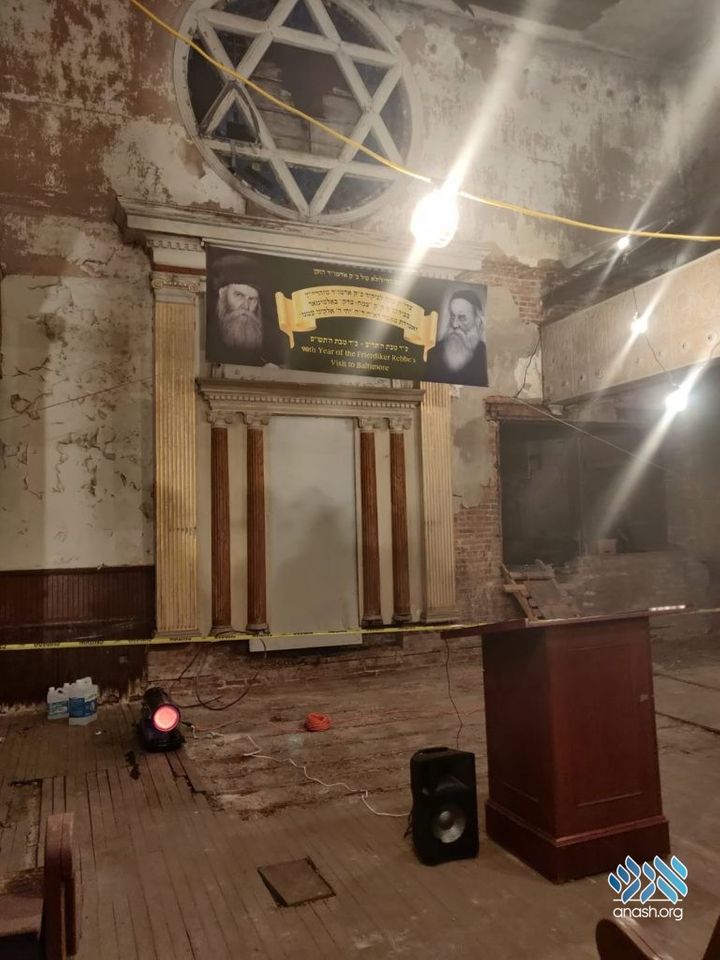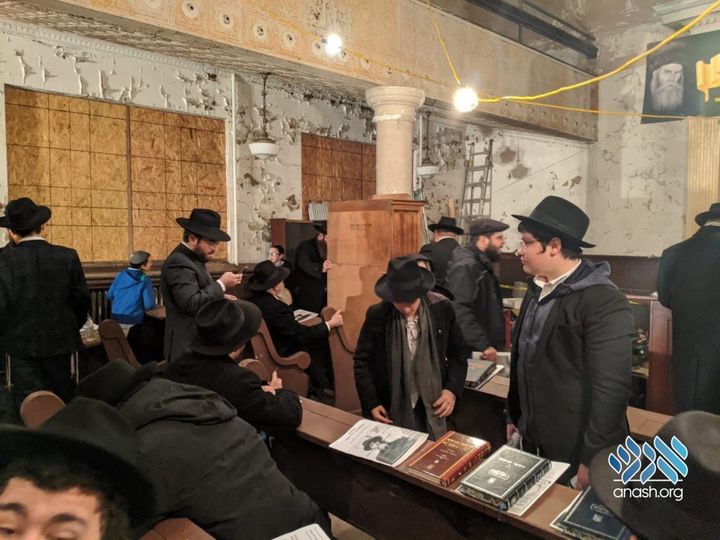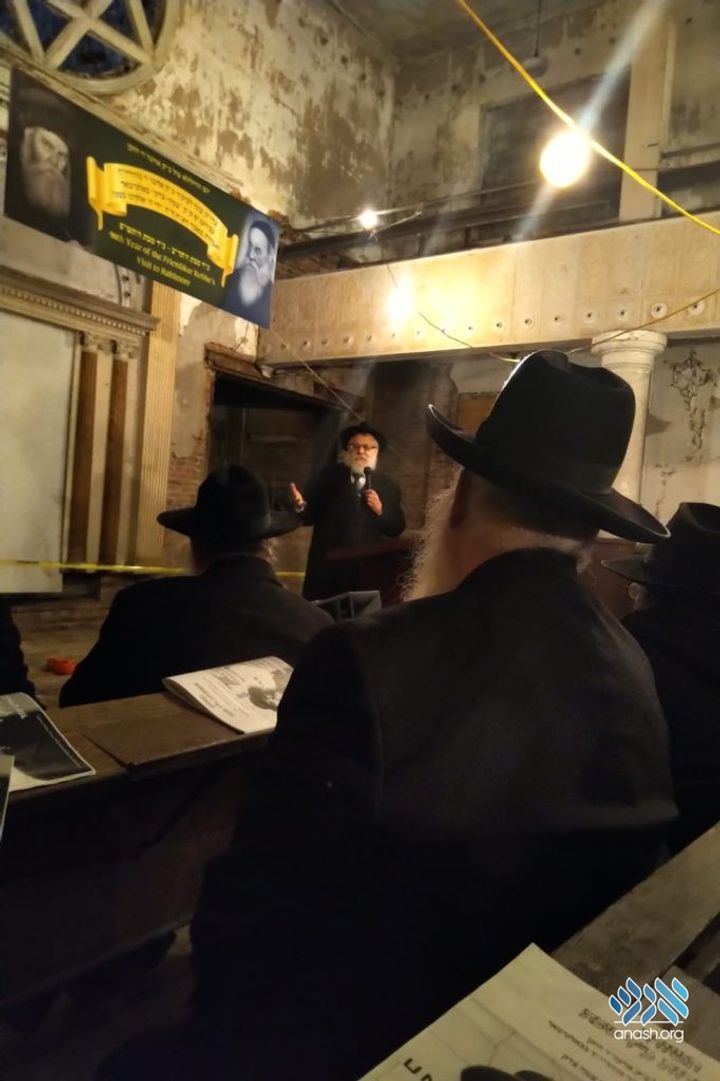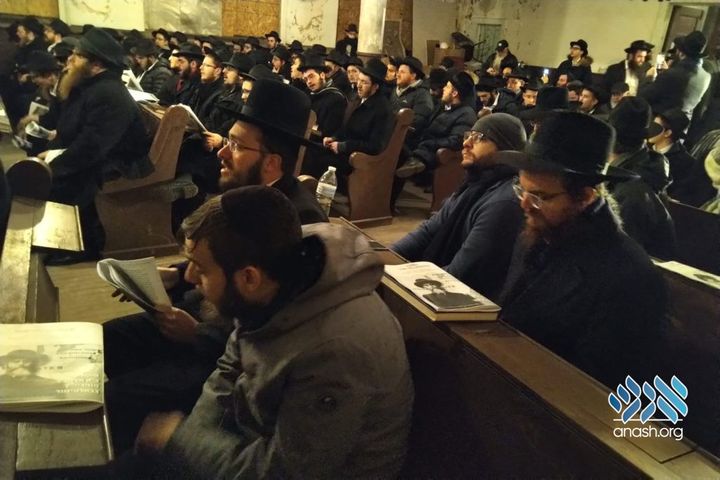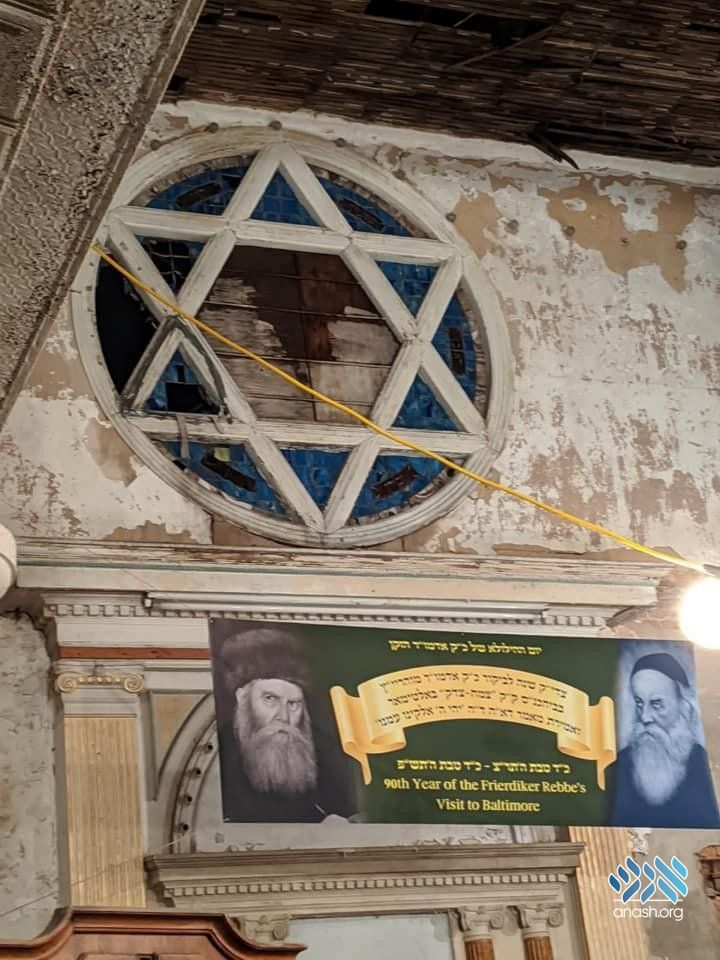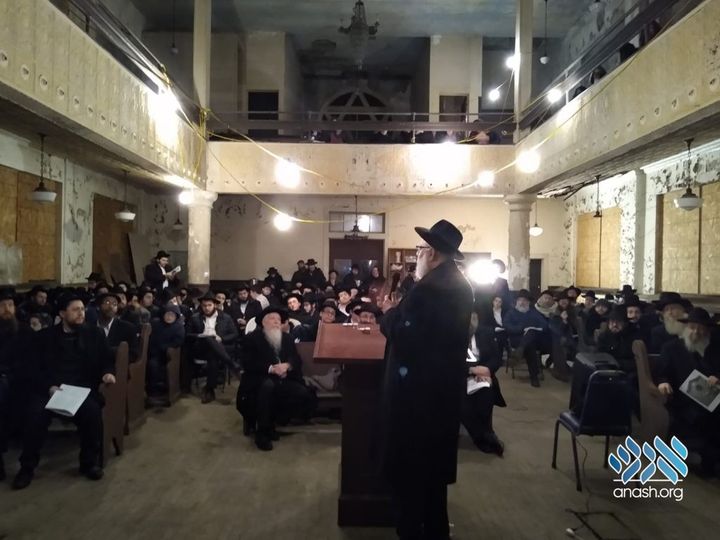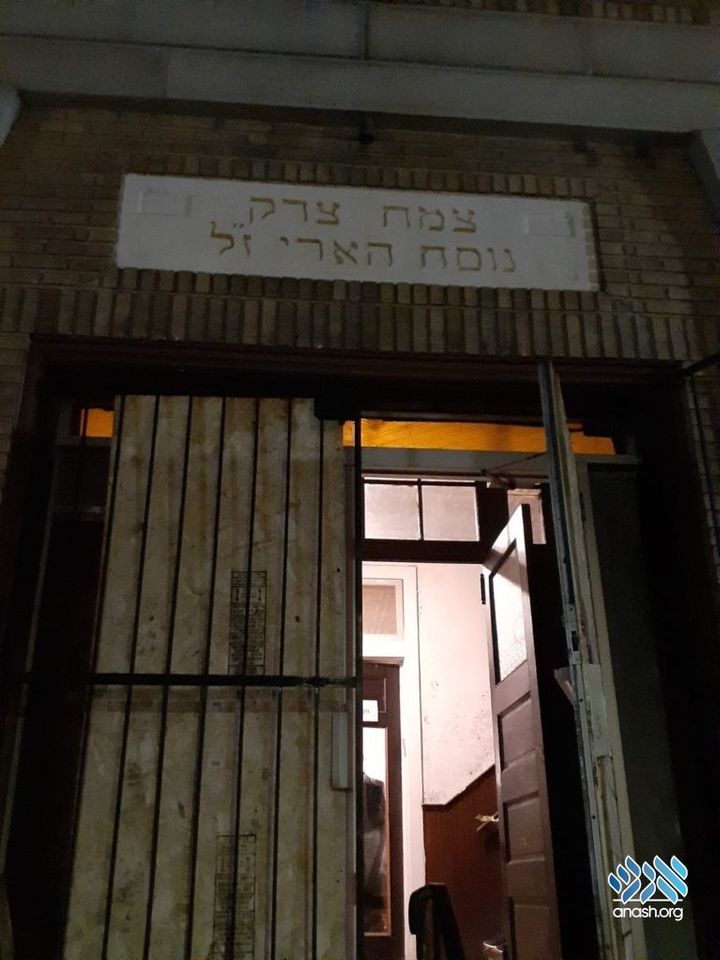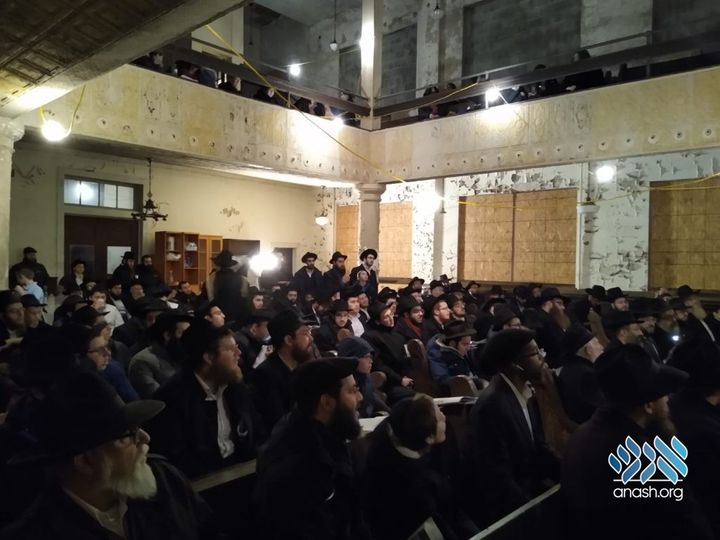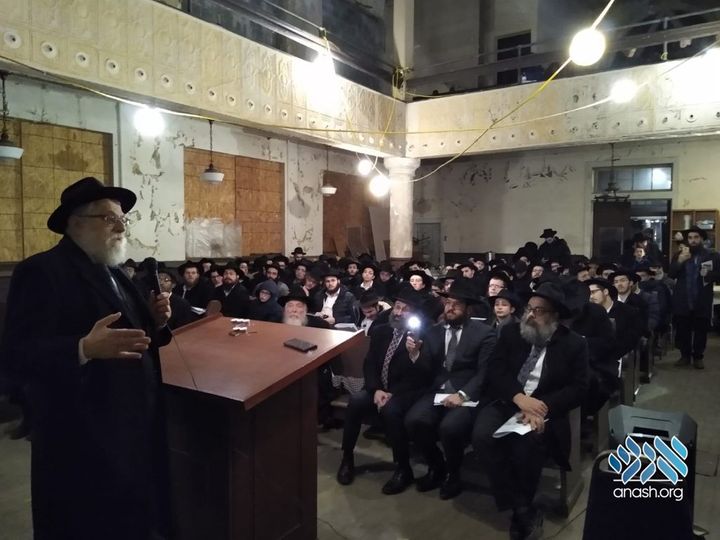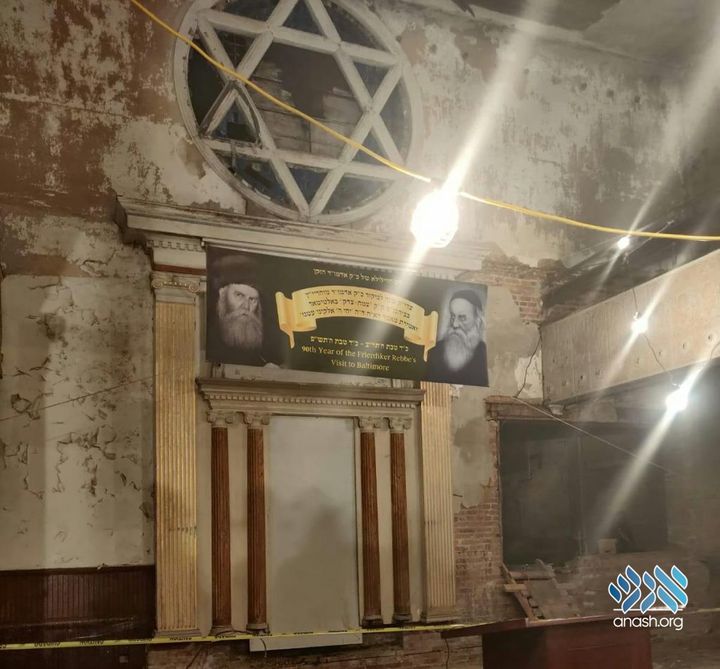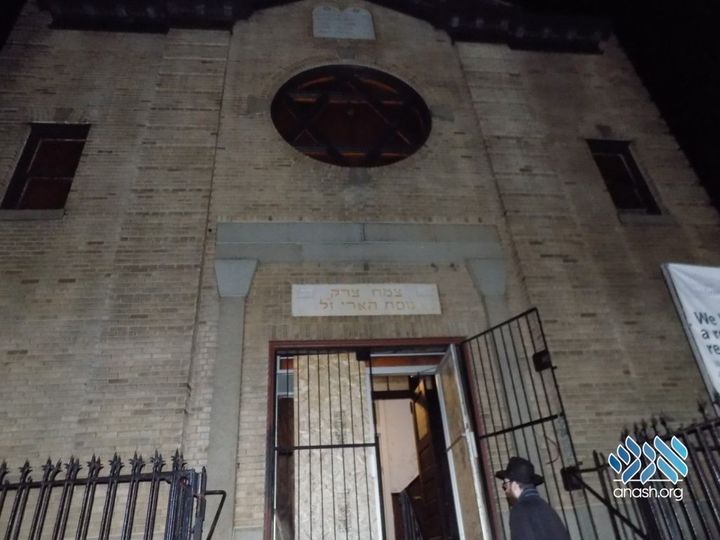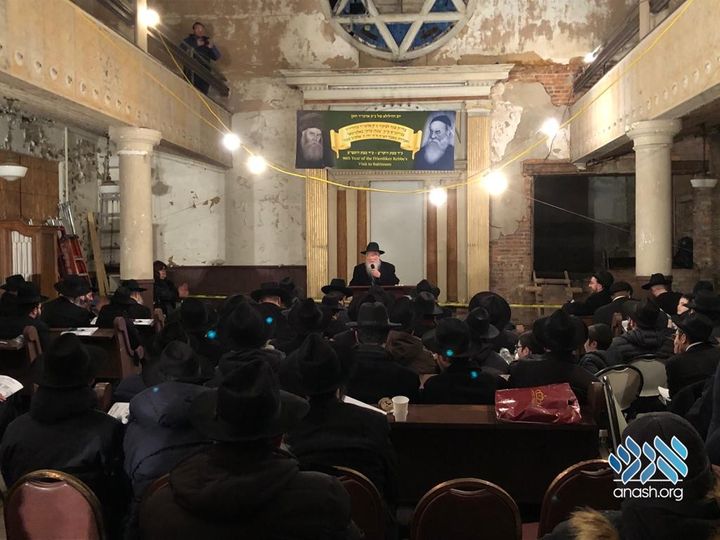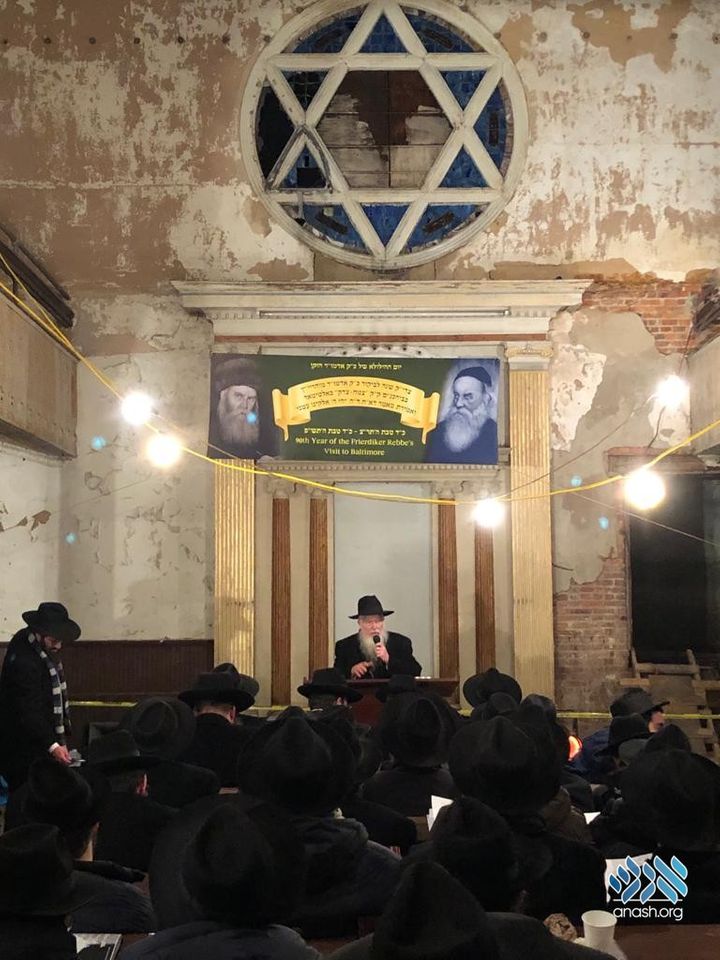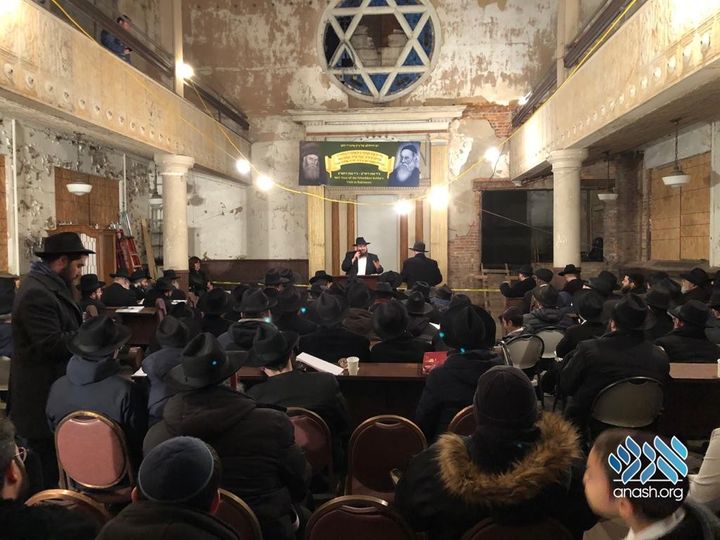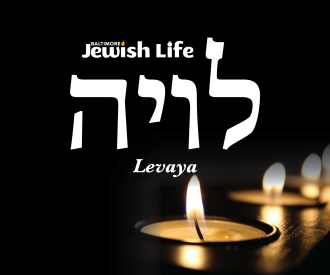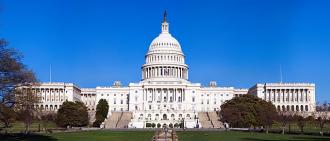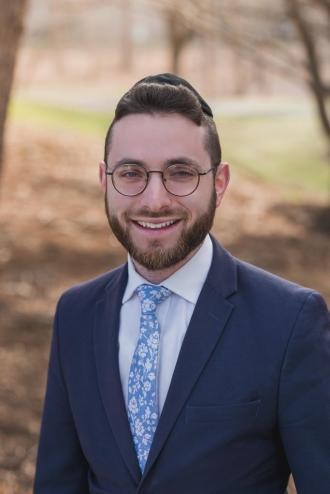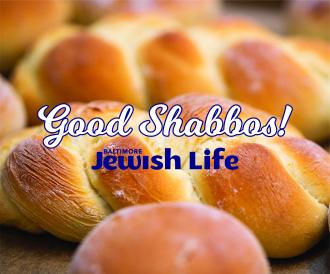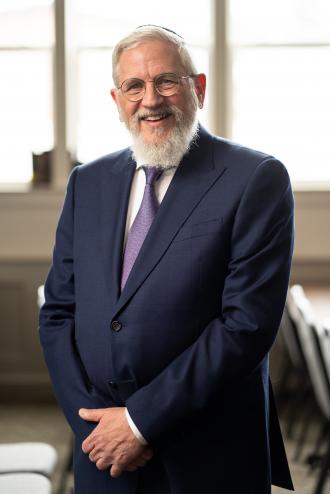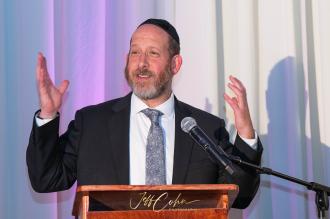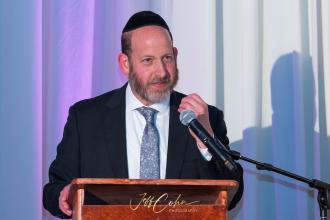Baltimore, MD - Jan. 23, 2020 - On the 90th anniversary of the Previous Lubavitcher Rebbe’s visit to Baltimore, a commemorative gathering occurred at the historic Downtown Tzemach Tzedek Shul, where a large crowd came together to learn the same Chasidic discourse he delivered- at that exact time, in that exact place.
In 5690 (1930), the Previous Lubavitch Rebbe spent a year in America during which he visited several US cities. One of those cities was Baltimore, where he stayed for three weeks, from 12 Teves until 4 Shvat. The newspaper accounts of his visit noted that over three thousand people came to welcome the Rebbe at Baltimore's Mt. Royal station.
On the Yahrtzait of his ancestor the Baal Hatanya, Chof Daled Teves, the Previous Rebbe visited the Tzemach Tzedek Lubavitch shul on Fairmount Ave. where he davened maariv and delivered fiery words of Torah and Chizuk (called a maamar in Chasidic terminology) beginning with the words ‘Yehi Hashem Elokeinu Imonu’, with over a thousand people in attendance.
This year on that very day, Monday evening, Chof Daled Teves, 200 people gathered in the shul to mark 90 years from the historic event.
“We had the zchus that the Previous Rebbe came to our city and gave over a Maamar (Chasidic Disscourse) in this very shul,” said Rabbi Shmuel Kaplan, director of Chabad Lubavitch in the Maryland region. “We learned the maamar at the exact hour that the Previous Rebbe delivered it 90 years ago.”
The program was organized by Rabbi Zalman Spitezki, who, together with several others in the community, worked tirelessly to pull off the inspiring evening.
The Tzemach Tzedek shul was built in 1922 by chassidim who had fled Russia for America, and were determined to stay strong in their Yiddishkeit. In 1923, Rabbi Avrohom Eliyohu (Elye) Axelrod arrived in Baltimore, where he served as the shul’s rov until his passing in 1952.
In the 60s and 70s, Baltimore’s Jewish community migrated westward, leaving the crime-ridden downtown area for the safety of nearby suburbs. A few years ago, a member of the community took the initiative to redeem the shul by purchasing it back. Unfortunately, it was in a terrible state of disrepair.
“The shul has disintegrated to the point that in order to do this event, we had to bring in a generator and arrange for heating,” Rabbi Kaplan said. “However, the original benches are still there, and we were able to sit in them as we learned the holy words of Torah delivered there by the Previous Rebbe.”
The height of the event occurred following maariv and the singing the famed Nigun Daled Bavos Of the Baal HaTanya, when Rabbi Nochum Bukiet, senior mashpia of Yeshivas Lubavitch of Baltimore, gave over the maamar.
“The atmosphere was truly uplifting,” said Rabbi Spitezki, who emceed the evening. “Learning the Maamar at the same time and place as the Frierdiker Rebbe said it was truly a highlight.”
Following remarks by Rabbi Elchonon Lisbon, rov of the Anash Shul Ohel Levi Yitzchok, Rabbi Kaplan related some of the history of the Lubavitch community in Baltimore. One especially poignant story that he shared took place in a room off to the side of the shul they were sitting in.
“Before I came to Baltimore,” said Rabbi Kaplan, “Rabbi Moshe Groner told me the following: In 5711 (1951), he was sent on a Shlichus to Baltimore by the Rebbe, who told him he should ‘station’ themselves in Reb Avrohom Elye’s home. The first day after arriving at his home, they went to the Tzemach Tzedek’s shul to daven.
“When he finished davening, Reb Avrohom Elye took them into a room and removed a blanket which was covering a chair. ‘On this chair,’ R Avrohom Elye said, ‘the Frierdiker Rebbe sat and said a maamar.’ He then burst out crying and could not be consoled.”
In honor of this occasion, the maamar was produced with English translation by Reb Noach Shavrick. He dedicated it in memory of his ancestor, Rabbi Chaim Schneur Zalman Dov Ber Shavrick, a shochet and one of the leaders of Chabad Chassidim in Baltimore, who was present when the Rebbe said the maamar in 1930.
Each participant received a memento which includes the maamar and a letter from the Frierdiker Rebbe to his Rebbetzin describing the evening on which this maamar was delivered. The teshura also contains newspaper articles that were written at the time of the Frierdiker Rebbe’s visit to Baltimore.
At the conclusion of the evening, the crowd broke out in a joyous dance.
“It was a big simcha to come back to this historic place after so many years and daven maariv and learn this very special maamar,” Rabbi Spitezki said.
